How many voices do you recognize? I'm not talking about fabricated cartoon or character dialects. Rather, think about people you have a close relationship with and could instantly recognize by their vocal inflections, tonality, or accent. Even more, what about someone's way of walking, style of clothes, nervous ticks, quirks, and habits or other body language? We all have unique characteristics that set us apart and so do the wheeled brands that dominated the American West. Just as every person on the planet is different, every one of these wooden survivors has countless distinctions. Noticing and homing in on those differences is the first step to understanding the voice of the vehicle.
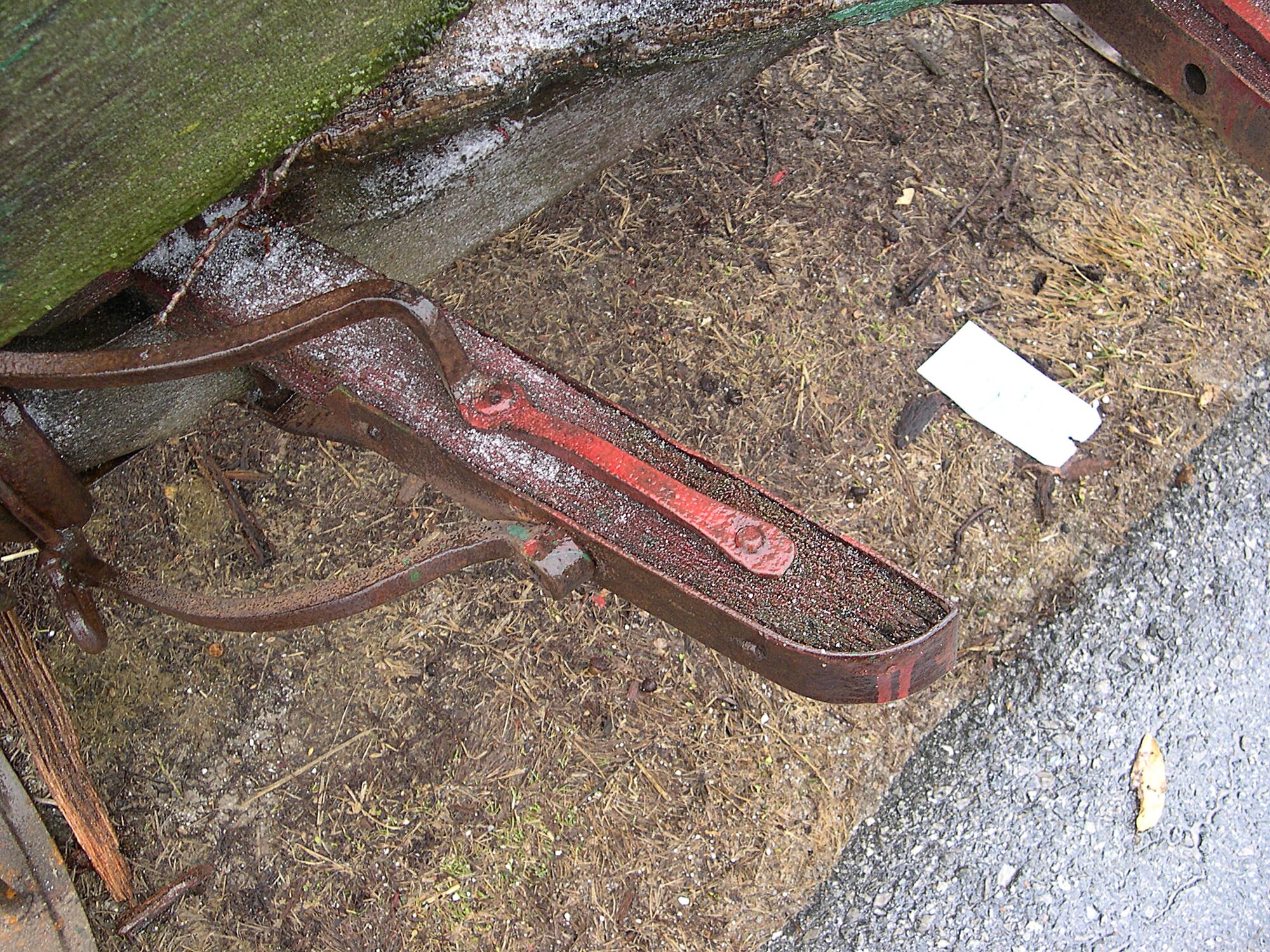
This photo carries significant clues as to the maker. However, it takes more than a few features to absolutely confirm a manufacturer. Regrettably, I regularly see misidentified vehicles.
I'm regularly asked how I can distinguish different brands from one another. The answer is easy but the journey has been long and often hard. There are endless pitfalls, opportunities to stumble, and not every builder is identifiable. There were just too many (tens of thousands). One MAJOR rule is to firmly resist the temptation to instantly assign a maker name to an antique vehicle - particularly those that have lost a large portion of original paint. To that point, when it comes to farm-style wagons, zeroing in on the metal reach plate can offer maker clues but assuming that single piece will be the final authority as to the entire vehicle brand could be overly optimistic. Maybe it will lead in the right direction but there are times it won't. Why? Because parts can be, have been, and often are changed from their beginnings. I've seen this happen more times than I can count. Sometimes the changes occurred during the primary usage of the vehicle but, in other instances, the mixing and matching of parts may have occurred more recently as folks put available pieces together to make a whole.
These 'Frankenstein' sets of wheels don't belong to any single brand but are a combination of parts from multiple places. As an example - and yes I've actually seen this - if the forward rocking bolster is from a different maker than that of the front sandboard and axle... if the reach plate is from a different builder than the rear axle and bolster... if the tongue, box, seat, and springs are also from a series of different builders... Who is the maker? It's possible to have a piece made up of parts from a dozen or more different origins! In these extreme cases or even those where the folding endgate carries a different name from the reach plate, how do you assign a brand to the entire piece? I've written about analyzing maker identities before but there are other things we can also learn while listening to the 'voice' of an old set of wheels.
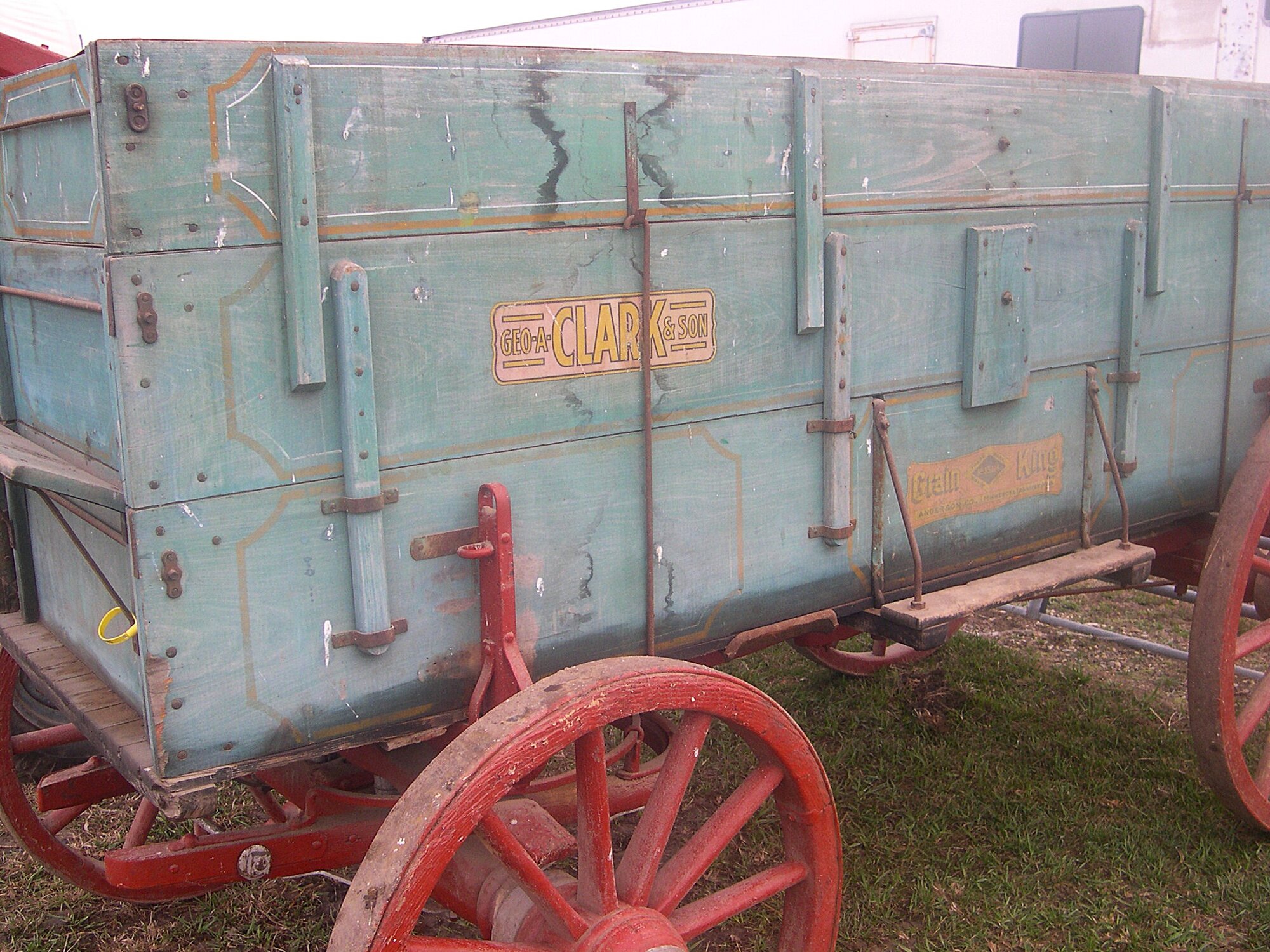
This wagon is a combination of two, separate and unrelated brands - The box and running gear are also from different timeframes of manufacture.
For instance, the makeup of an old wagon can offer tremendous insights into the character of the design. Listening closely to the voice, it may be possible to learn what is different about the design and why. Specifically, was the vehicle engineered for a particular part of the country? For what purpose was it created? Are there any patents or unique features on the piece? In what timeframe was it built? Even if a maker isn't discernable, is it possible to determine a region that the maker called home? Finally, we may also be able to factor in a few more thoughts by reviewing the wood and other raw materials. Answers to each of these ponderings may be as close as the vehicle itself.
With that said, let's look at each of the questions above. Almost every major builder designed wagons for the type of terrain present in different parts of the U.S. and even other countries. For instance, flat lands may not need a wagon with brakes or a drop tongue. Narrow track wagons are also common fare for medium to level ground. Conversely, wagons designed for hilly, mountainous, or more rugged terrain will tend to have brakes, a wider track, drop tongue, and possibly even steel extension skeins instead of cast skeins. Sandy ground may be more conducive to wider tires while hard ground may be better suited for narrow tires.
When it comes to a wagon's purpose, there are design elements on the bed and running gear (undercarriage) that can help us understand the purpose of the piece. To that point, oil gears, escort wagons, log wagons, lumber gears, articulating boxes, ladder frame boxes, hay racks, low slung drays, cotton beds, and countless other designs all convey intentions of use in the way they're put together.
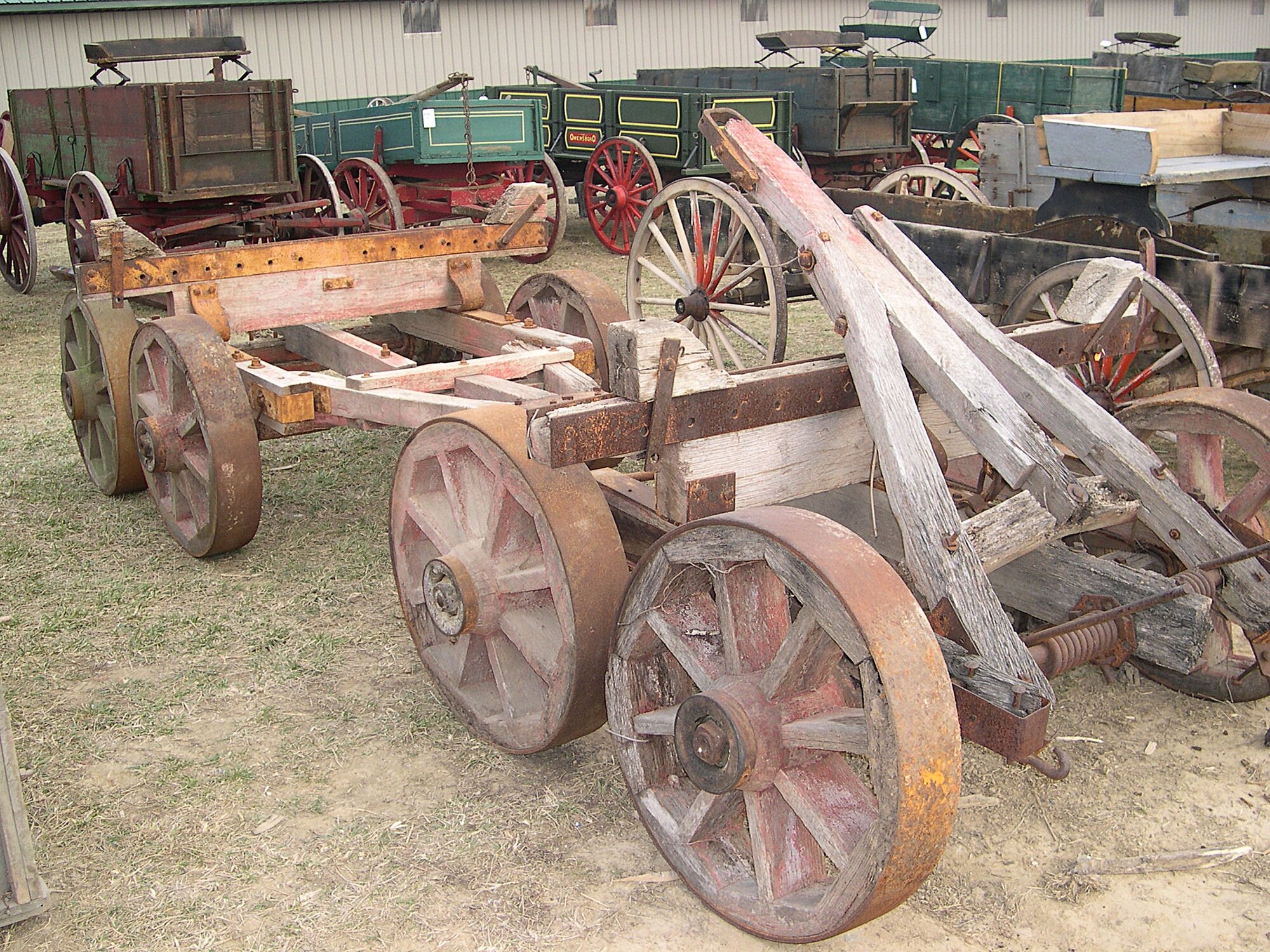
Old wagons come in a variety of shapes, sizes, purposes, and designs. Eight-wheeled log wagons, such as the one in the foreground here, were made by a number of builders.
Different makers often used different design elements, some of which were patented. Not only can those unique features point to a particular builder and timeframe of manufacture but they can also shed light on the engineering and marketing directions of the creator. As an example, while there were at least two other makers with a similar design, the Winona wagon brand can sometimes be identified as one with Iron Clad hubs on the wheels (metal shells pressed onto the wooden hubs). As a side note, I recently saw an episode of The Big Valley that featured a Winona with those hubs. It's interesting to see how some of these pieces were used by Hollywood and also intriguing to note that, oftentimes, the movie industry has used wagons with technology or designs that didn't occur until well past the supposed era of the motion picture storyline. (Yes, I'm the nerd that notices those things) As I'd mentioned earlier, Winona often gets the credit for the Iron Clad hubs but they were not the inventors or patentee of it. As a further side note, the technology was designed to help keep the hubs from cracking and the wheel weakening due to the exposure of weather and use.
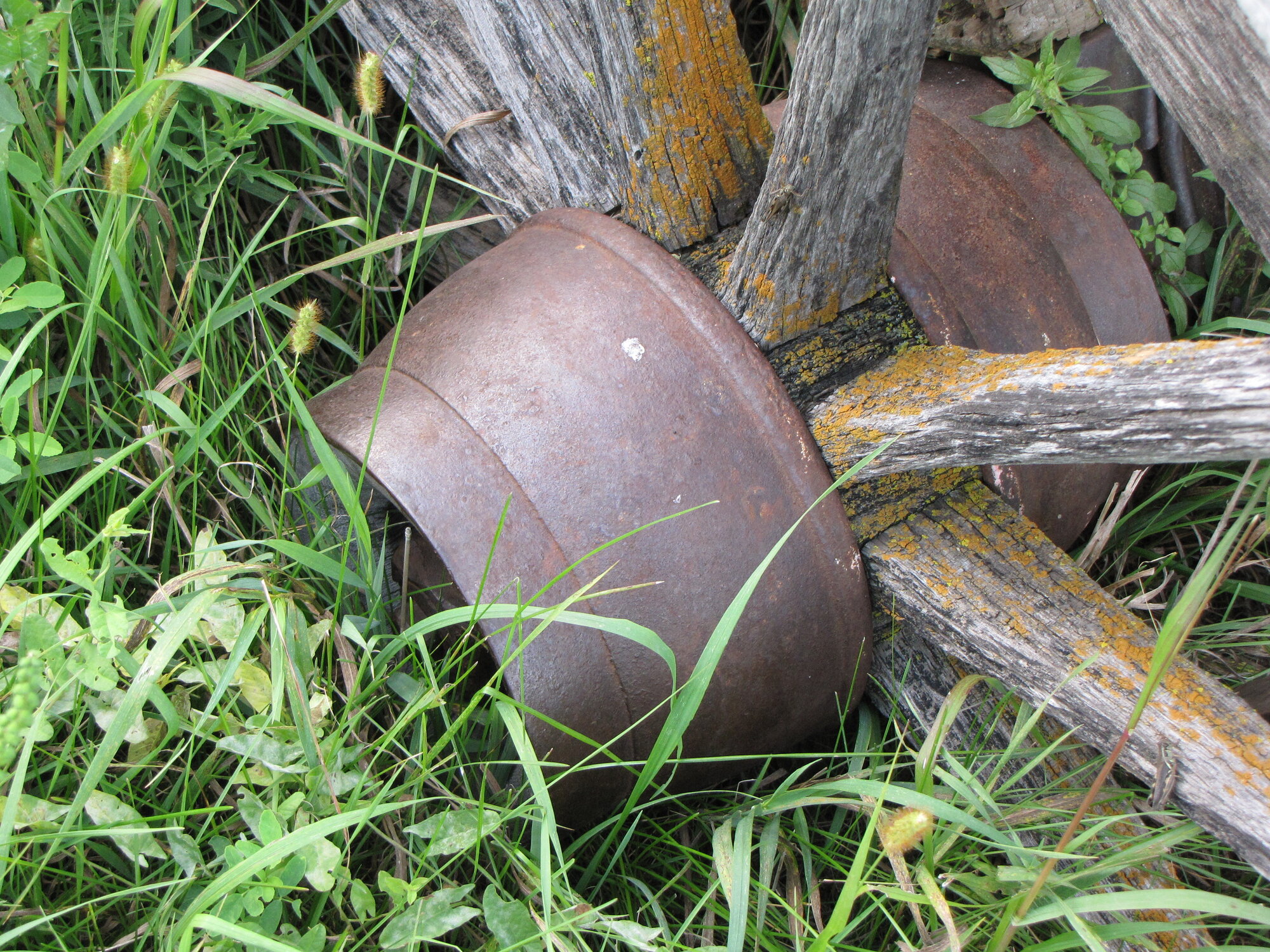
The image above shows a wheel with an 'Iron Clad' hub. This one is from a Winona brand wagon.
Timeframes of manufacture can be dictated, at least in part, by the practices of the builder and general industry trends. Even so, construction methods also tended to evolve over time. Straked iron, rave frame beds, through-bolted running gears, round edge tires, wider floor boards, track widths, and ground clearances all had a way of shifting from or to something different. Understanding who did what and when can go a long way toward pinpointing a year or decade of construction.
Similarly, wagons built within America's eastern states very often had variations in hardware, contours, ironwork, and other design features than those made within the central and western portions of the United States. Familiarity with regional characteristics is another way we can 'hear' what a set of wheels is saying.
Finally, fluctuating availability of materials and even deliberate use of different wood in some circumstances can also help tell the story of many antique wagons. As an example, not all but some original yellow-painted wagon gears were an indication of Bois D'Arc or Osage-orange wood being used in the wheels. This wood has tremendous advantages as it is highly resistant to insect damage, rot, and shrinkage.
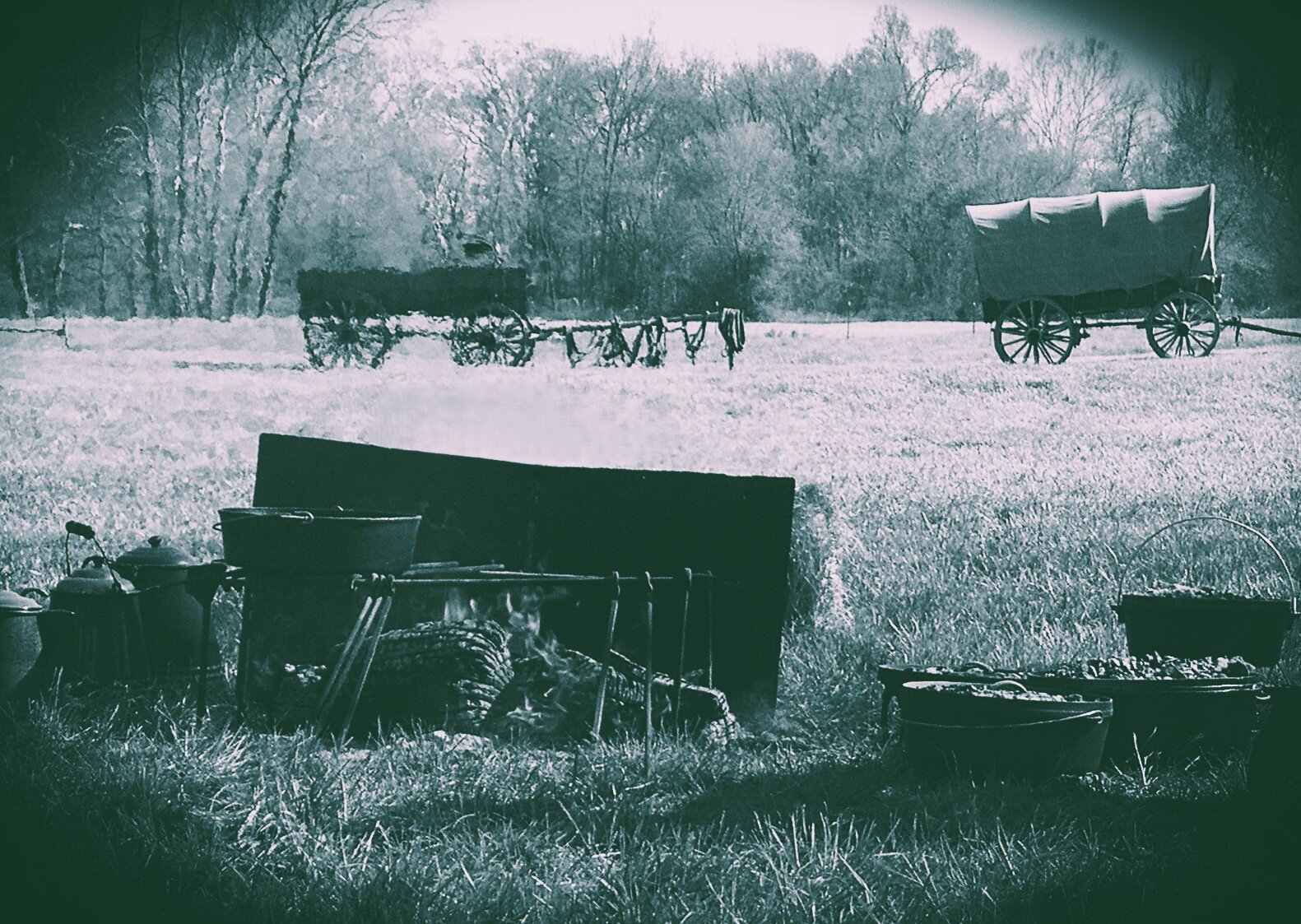
No two wagons are ever the same - Even if they are from the same maker and year of manufacture. Spotting the distinctions helps us 'hear' what the vehicle has to say.
From the back of the reach to the tip of the tongue, these designs have a lot to say. My advice? If you're considering a purchase and don't have money to burn but want a solid piece of history to share with others, get objective details first. Very often I'm contacted after-the-fact from folks wanting to know what they just bought. That always strikes me as a strange time to ask. Sometimes, there's positive news I can pass along and sometimes... well, let's just say if you're looking to buy an antique vehicle and want to know more about it, the time to ask is before and not after the purchase of a mystery machine.
If you've spent much time around a wagon, you know the sounds they make when moving. Learning their voice, though, is different. It's akin to becoming fluent in thousands of different languages. The old workhorses still talk but, if we want to know more, we must learn to listen and become familiar with a world of Forgotten Voices.
Psalm 20:7